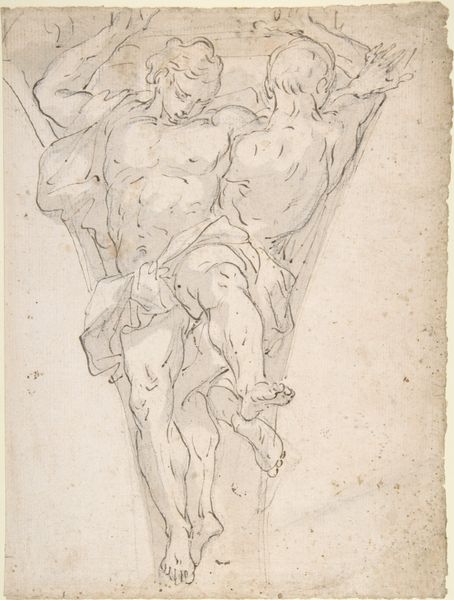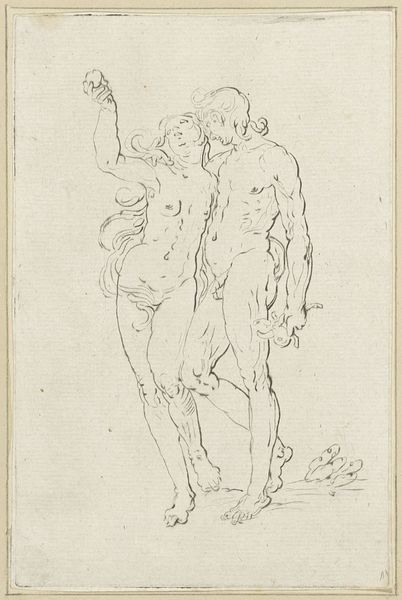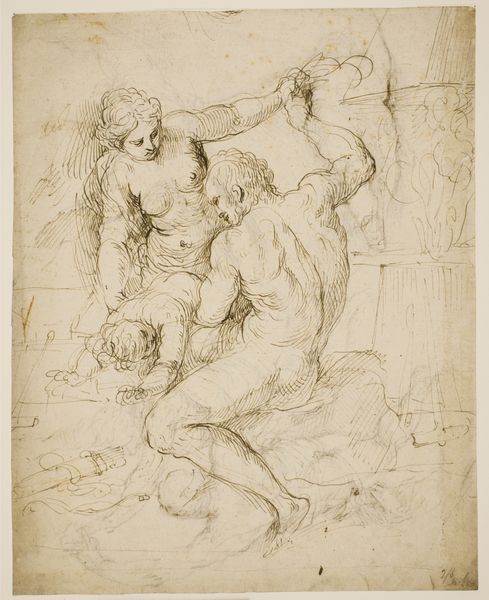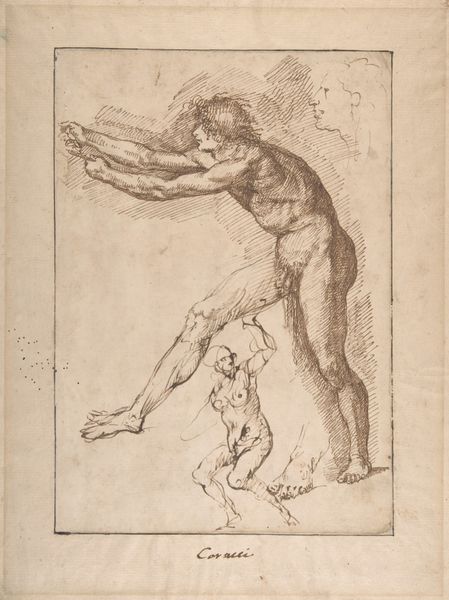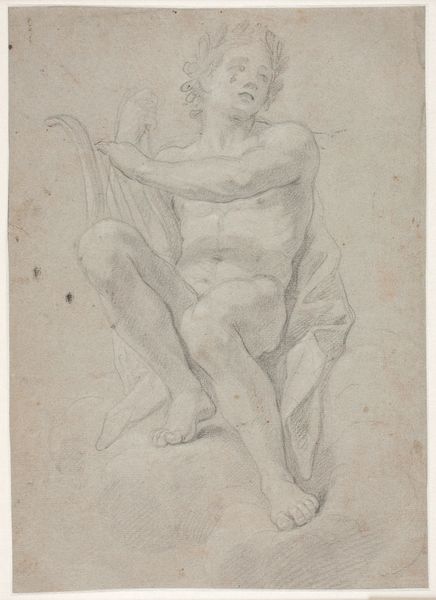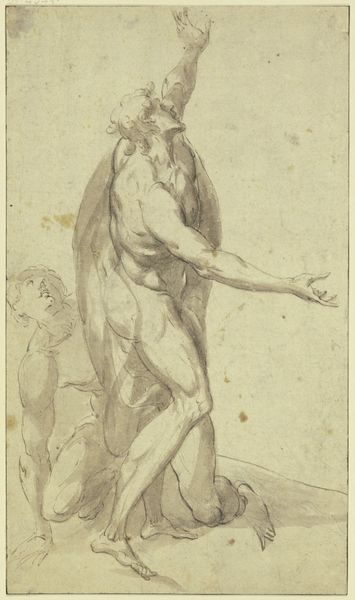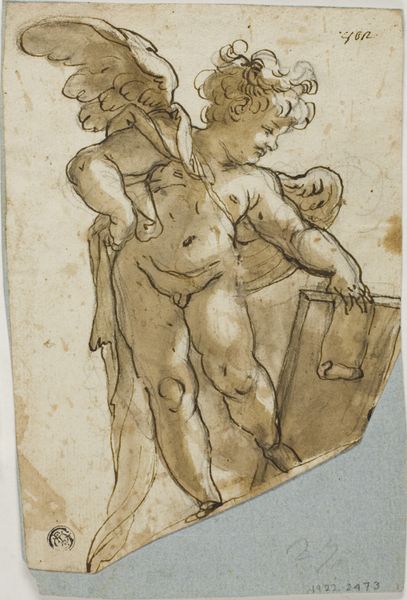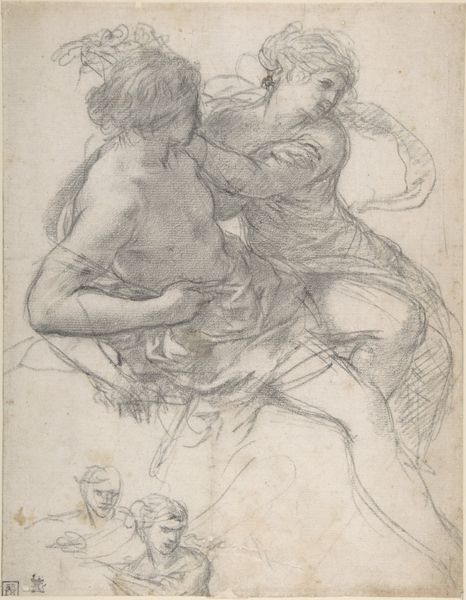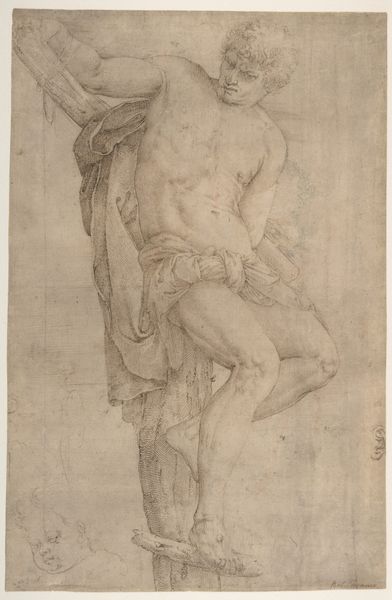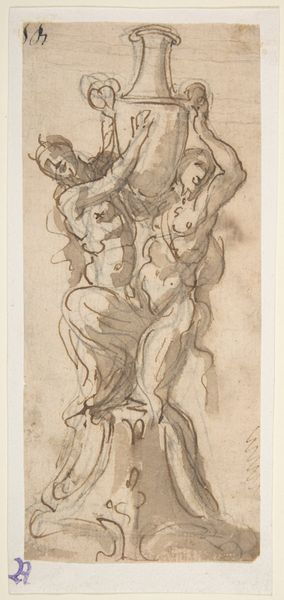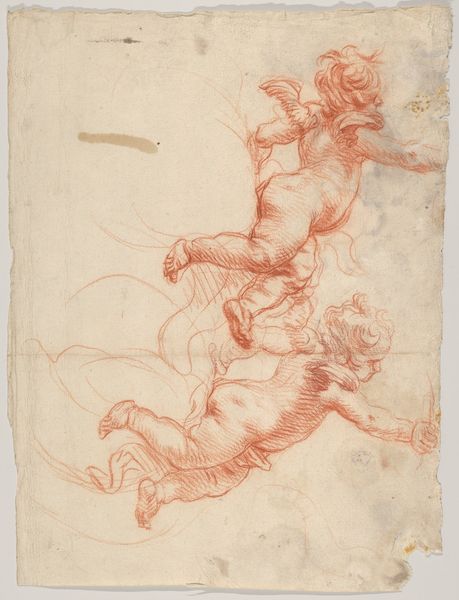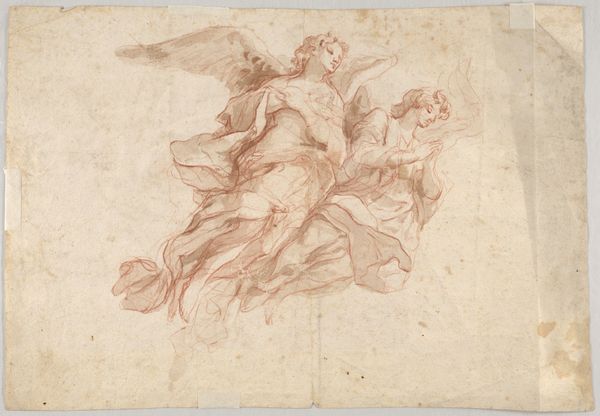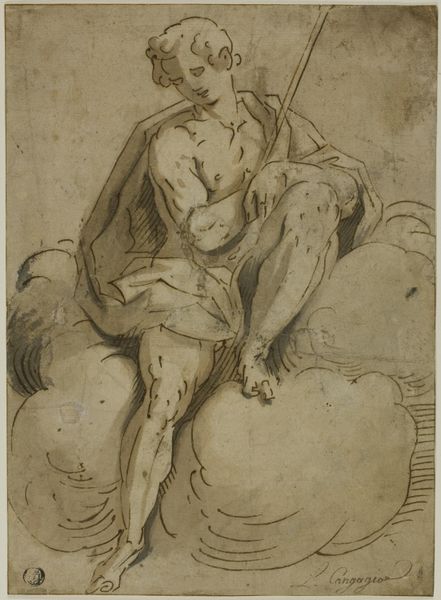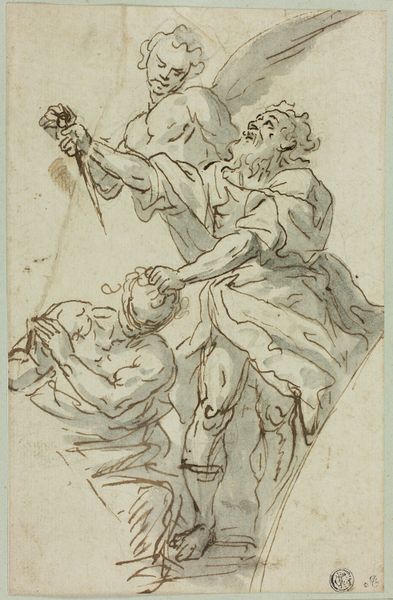
Two Partially Draped Male Figures in a Pendentive 1603 - 1684
0:00
0:00
drawing, print, pencil
#
drawing
#
baroque
# print
#
figuration
#
pencil
#
nude
Dimensions: 11 7/16 x 9 3/16in. (29 x 23.3cm)
Copyright: Public Domain
Editor: This is "Two Partially Draped Male Figures in a Pendentive" by Giovanni Battista Carlone, created sometime between 1603 and 1684. It’s a drawing in pencil, and looks like a study for a larger work. The figures are compelling, and the composition, wedged into that architectural space, makes me wonder about the context. How do you interpret this work from a formalist point of view? Curator: Thank you for that observation. Formally, consider how Carlone uses line to define the muscularity of the figures, setting a dynamic, if unstable, composition within the confines of the pendentive shape. Note how the lighter, sketchier lines give a sense of movement and becoming, in contrast to the more defined areas. Do you see how this interplay of light and shadow contributes to the overall dramatic effect typical of the Baroque? Editor: Yes, the contrast between the loose sketching and the more defined areas creates a real sense of depth, even within such a limited palette. What's the effect of using such a limited range of tones to achieve this effect? Curator: Precisely. The tonal restraint allows the viewer to focus on the figures' anatomy and their dynamic relationship within the architectural framework. Ask yourself, what does it mean to the work that Carlone prioritized line and form over color or shading? Editor: That's a great point. It almost feels like he's inviting us to complete the image ourselves. By emphasizing form, we focus on the figures' movement. Thank you! I am noticing so much that I wouldn’t have otherwise. Curator: Exactly! Formal analysis draws our attention to the internal logic of the work, prompting such reflections. Seeing how an artist employs line and form will open new avenues for approaching any work of art.
Comments
No comments
Be the first to comment and join the conversation on the ultimate creative platform.
